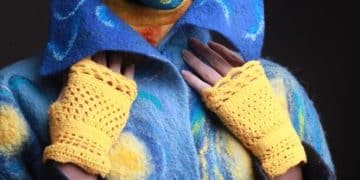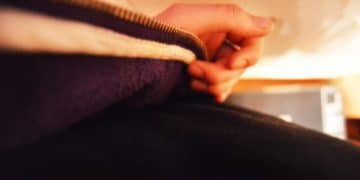Cosplay Fabric Dyeing Guide: Custom Colors for Your Costume
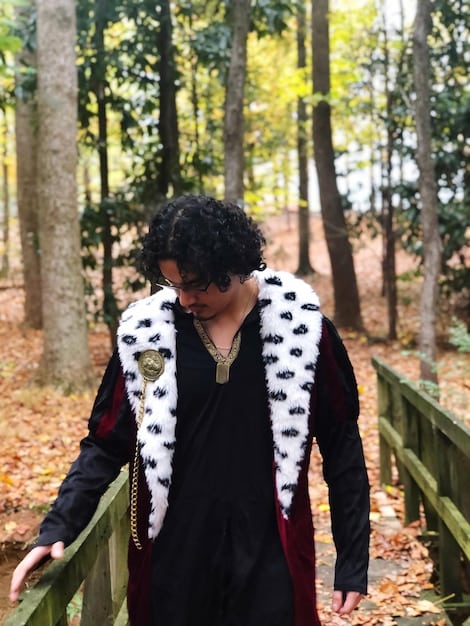
Master the art of cosplay fabric dyeing with our comprehensive guide, designed to help you achieve any custom color imaginable for your costumes, ensuring authenticity and visual impact.
Ready to bring your cosplay visions to life with perfectly colored fabrics? Our Cosplay Fabric Dyeing Guide: Achieving Custom Colors for Your Costume is here to help you master the art of creating unique and vibrant hues for your next project.
Understanding Fabric Dyeing for Cosplay
Fabric dyeing is a fundamental skill for cosplayers aiming for accuracy and originality. It allows you to create custom colors that perfectly match your character’s design, giving your costume a professional and authentic look.
Why Dye Your Own Fabric?
Dyeing your own fabric offers several advantages over purchasing pre-colored materials. Not only does it give you complete control over the color, but it also ensures uniformity across different types of fabric used in a single costume.
Here are more reasons why you should consider dyeing your own fabric:
- Customization: Achieve the exact shade you need, impossible to find off the shelf.
- Cost-Effective: Often cheaper than buying multiple specialty fabrics.
- Uniformity: Ensures consistent color across different fabric types.
Before you start, it’s essential to understand the basics of fabric dyeing and the different types of dyes available.
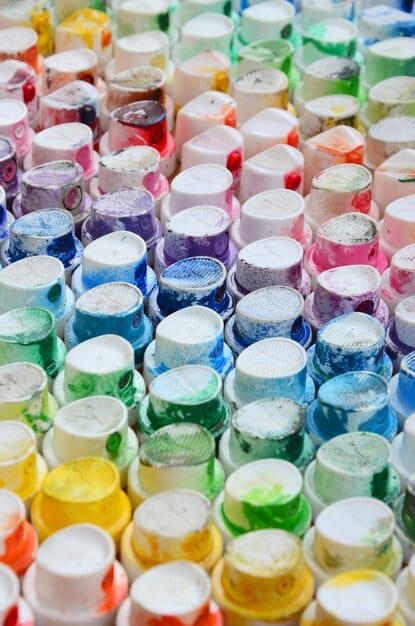
Choosing the Right Dye for Your Fabric
Selecting the appropriate dye is critical for achieving the desired color and ensuring the dye bonds correctly with your fabric. Different fabrics require different types of dyes to ensure lasting and vibrant results.
Types of Dyes
There are several types of dyes available, each suited for specific fabrics. Here are some of the most common types:
- Acid Dyes: Ideal for protein fibers like wool, silk, and nylon. They provide bright, vibrant colors and excellent wash fastness.
- Reactive Dyes: Perfect for cellulose fibers like cotton, linen, and rayon. They bond chemically with the fabric, offering excellent color retention.
- Disperse Dyes: Used for synthetic fibers like polyester. They require high temperatures to penetrate the fabric, often involving a dye carrier.
- All-Purpose Dyes: Convenient for dyeing a variety of fabrics, but may not provide the same level of vibrancy or wash fastness as specialized dyes.
Always check the fabric content of your material before choosing a dye. This will ensure the best possible results and prevent damage to your fabric.
Consider these factors when selecting the dye:
- Fabric Type: Match the dye to the fiber content.
- Desired Color: Some dyes offer a wider range of colors.
- Wash Fastness: Choose dyes that offer good color retention for costumes that need regular washing.
Selecting the correct dye ensures your colors are vibrant and long-lasting.
Preparing Your Fabric for Dyeing
Proper preparation is key to achieving even and consistent color when dyeing fabric. This involves cleaning the fabric and pretreating it to ensure it’s ready to absorb the dye.
Wash your fabric to remove any finishes:
- Wash New Fabric: Remove any manufacturing finishes.
- Soak Old Fabrics: Ensure any dirt or stains are removed.
Pre-treating your fabric can also improve the dye uptake. For cotton, a soda ash soak can help the dye bond more effectively. For synthetics, a dye carrier might be necessary to help the dye penetrate the fibers.
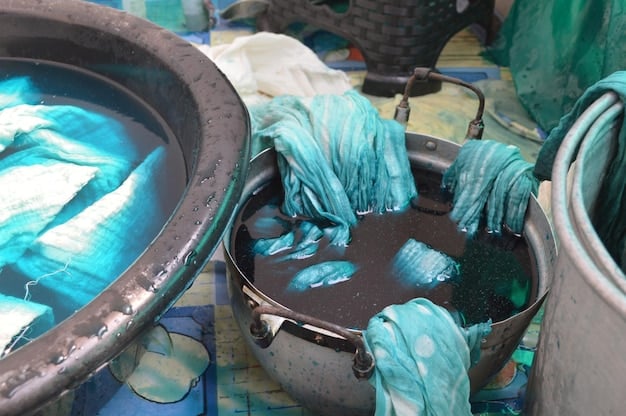
The Dyeing Process: A Step-by-Step Guide
Dyeing fabric can seem daunting, but following a systematic approach ensures success. This guide provides a detailed walkthrough of the dyeing process, from mixing the dye to rinsing and setting the color.
Setting Up Your Dye Bath
Prepare your dye bath according to the dye manufacturer’s instructions. Use a stainless steel or enamel pot, as other materials may react with the dye. Ensure you have enough water to allow the fabric to move freely.
Dyeing Your Fabric
Submerge your fabric in the dye bath, ensuring it’s fully covered. Stir the fabric continuously to promote even dyeing. The dyeing time will vary depending on the dye and the desired color intensity, but typically ranges from 30 minutes to an hour.
Rinsing and Setting the Color
After dyeing, rinse the fabric under cold water until the water runs clear. This removes any excess dye. To set the color, use a commercial color fixative or a solution of vinegar and water. This helps prevent the color from fading over time.
Remember to follow these steps:
- Submerge Fabric: Ensure even dye distribution.
- Stir Continuously: Avoid blotchy results.
- Rinse Thoroughly: Remove excess dye until water is clear.
Proper rinsing and color setting are crucial for long-lasting results.
Achieving Custom Colors: Mixing and Matching Dyes
One of the most exciting aspects of fabric dyeing is the ability to create custom colors. By mixing different dyes, you can achieve unique shades that perfectly match your character’s design.
Understanding Color Theory
A basic understanding of color theory is essential for mixing dyes effectively. Knowing which colors to combine to achieve your desired hue can save time and prevent costly mistakes. Use color wheels as reference.
When mixing dyes, consider the following:
- Start Small: Add small amounts of dye at a time.
- Keep Records: Note the dye ratios for future reference.
- Test Swatches: Dye small fabric samples to preview the color.
By experimenting with different dye combinations, you can create an unlimited palette of custom colors for your cosplay projects.
Testing small swatches is key to achieving the perfect custom color:
- Dip Test: Quickly dip a piece of fabric into your dye pot for a preview.
- Full Immersion: Test the full dyeing process with a small swatch before committing your main material.
- Drying Stage: Remember that colors can appear different when wet versus dry.
Troubleshooting Common Dyeing Issues
Even with careful preparation, dyeing issues can arise. Understanding how to troubleshoot these problems can save your project and ensure a successful outcome.
Uneven Dyeing
Uneven dyeing can result from insufficient stirring, overcrowding the dye bath, or inadequate fabric preparation. Ensure the fabric moves freely in the dye bath and is thoroughly cleaned beforehand.
Fading Colors
Fading colors can be caused by using the wrong type of dye, inadequate color setting, or harsh washing conditions. Always use the appropriate dye for your fabric and follow the manufacturer’s instructions for setting the color.
Color Bleeding
Color bleeding occurs when excess dye isn’t properly rinsed out. Rinse the fabric under cold water until the water runs clear, and use a color fixative to prevent further bleeding.
Addressing issues promptly ensures a better final product. Here are some steps to take if you encounter problems:
- Re-dye: If the color is too light or uneven, re-dye the fabric.
- Consult Resources: Check online forums or dyeing guides for solutions.
- Professional Help: If issues persist, consider consulting a professional dyer.
Maintaining Your Dyed Cosplay Fabrics
Proper care is essential to prolong the life and vibrancy of your dyed cosplay fabrics. Following these maintenance tips will keep your costumes looking their best for years to come.
Washing Instructions
Wash dyed fabrics in cold water with a mild detergent. Avoid using bleach or harsh chemicals, as these can cause the colors to fade. Turn the garment inside out to protect the dyed surface.
Drying Tips
Air dry dyed fabrics whenever possible. If using a dryer, use a low heat setting. Avoid direct sunlight, as this can cause the colors to fade. For delicate fabrics, consider laying them flat to dry.
Storage Solutions
Store your dyed costumes in a cool, dry place away from direct sunlight. Use garment bags to protect them from dust and pests. Avoid storing them in plastic bags, as this can trap moisture and lead to mildew.
By following these maintenance practices, you can keep your dyed fabrics looking vibrant and new. Some additional tips:
- Spot Clean: Address stains immediately to prevent them from setting.
- Iron Carefully: Use a low heat setting and a pressing cloth to avoid damaging the fabric.
- Regular Checks: Inspect your costumes periodically for any signs of wear or fading.
| Key Point | Brief Description |
|---|---|
| 🎨 Choosing the Right Dye | Match the dye to your fabric; acid dyes for protein fibers and reactive dyes for cellulose fibers. |
| 💧 Fabric Preparation | Wash fabrics to remove finishes and pretreat when necessary for better dye uptake. |
| 🧪 Custom Color Mixing | Test dye combinations in small swatches before dyeing your final fabric. |
| 🧺 Maintenance | Wash dyed fabrics in cold water, air dry when possible, and store away from direct sunlight. |
Frequently Asked Questions
▼
Reactive dyes are the best choice for cotton fabric. They bond chemically with the fibers, providing excellent color retention and wash fastness. These dyes are also relatively easy to use and produce vibrant, long-lasting results.
▼
To prevent uneven dyeing, ensure you stir the fabric continuously in the dye bath. Also, avoid overcrowding the dye bath and make sure the fabric is thoroughly cleaned and pretreated. This will help the dye absorb evenly.
▼
It’s generally not recommended to mix different types of dyes, as they may not react well together. Different dyes are formulated for specific fabric types and have different chemical properties. Mixing them can lead to unpredictable results.
▼
To set the color after dyeing, use a commercial color fixative or a solution of vinegar and water. Rinse the fabric under cold water until the water runs clear, then soak it in the fixative solution for the recommended time. This helps prevent fading.
▼
When dyeing fabric, always wear gloves to protect your skin and a mask to avoid inhaling dye particles. Work in a well-ventilated area and protect your workspace with plastic sheeting. Follow the dye manufacturer’s safety instructions carefully.
Conclusion
Mastering the art of fabric dyeing for cosplay opens up a world of creative possibilities, allowing you to achieve custom colors that bring your characters to life with unparalleled authenticity. By understanding the different types of dyes, preparing your fabrics correctly, and following best practices for dyeing and maintenance, you can create stunning costumes that stand out at any event.
